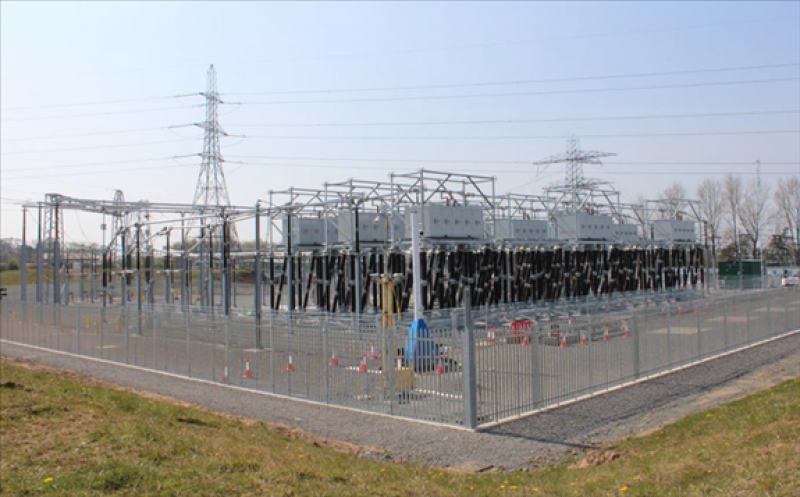National Grid Electricity Transmission (NGET) is using transformational technology to unlock 1.5 GW of network capacity — enough renewable energy to power one million homes — supporting the United Kingdom's net-zero ambitions.

As power grids become more intelligent, digital, and controllable, the NGET is using SmartValve, a cutting-edge modular power flow control technology, to drive this transition.
The NGET is installing SmartValve on five circuits at three of its substation sites in the North of England, which makes 500 MW of new network capacity available in each region. This technology will help to decarbonize the U.K. electricity grid by allowing greater volumes of renewable power to be efficiently transferred to customers.
As more renewable generation comes onto the network, depending on the weather, power flows change and circuits become unequally loaded, meaning some circuits reach maximum capacity while others are still well below their limits.
The sites — at Harker in Carlisle, Penwortham in Preston, and Saltholme in Stockton-on-Tees near Middlesbrough — were identified as needing a solution to solve bottlenecks of renewable power. State-of-the-art technology from U.S.-based Smart Wires intelligently and instantly routes power through circuits that have available capacity, maximizing use of the existing network.
Installing modular power flow controllers at these sites allows the NGET to provide National Grid's Electricity System Operator with the tools to quickly reduce the congestion that limits renewable generation, with minimal impact on communities and the environment.
Following these initial installations at the three sites, National Grid is looking to extend the capability at Harker and Penwortham in autumn. This could mean freeing up an additional 500 MW of capacity, enough to power more than 300,000 homes.
"Harnessing the potential of new innovative technologies to enhance benefits for customers and consumers is at the heart of everything we do. I'm proud to see the NGET leading the way and pioneering transformational and innovative engineering to achieve wide-scale decarbonization and overcome bottlenecks that are preventing maximum use of our networks. I'm delighted to see Smart Wires intelligent technology installed on National Grid's transmission network, making it a world's first — this will be key to unlocking extra capacity safely and quickly," said David Wright, chief engineer for National Grid.
Julian Leslie, head of networks at National Grid Electricity System Operator, said: "Managing constraints on the transmission network is an important part of our work operating the electricity system, so it's great to see Smart Wires technology being used. Developments such as this and the steps outlined in our five-point congestion management plan will reduce the impact of constraints, allowing us to harness the full potential of renewable generation and lower costs for the end-consumer — all helping toward our ambition of being able to operate the system at zero-carbon by 2025."
"The NGET has shown unparalleled global leadership in their whole-hearted embrace of innovative technology to enable rapid, affordable decarbonization. With these projects, the NGET has pioneered a new way to think about planning and operating the grid — leveraging flexible investments to deliver gigawatts of impact in incredibly short timeframes," said Peter Wells, Smart Wires CEO. "Our vision at Smart Wires is a highly efficient grid that powers a cleaner planet, and we are so proud to stand alongside our NGET partners and celebrate this success."
Simon Innis, managing director for Omexom UK, said: "Omexom is delighted to have been selected to partner with both National Grid and Smart Wires to manage and install this innovative technology. The strength of our team's relationships was integral to ensure the success of the world's first large-scale implementation of power flow technology."